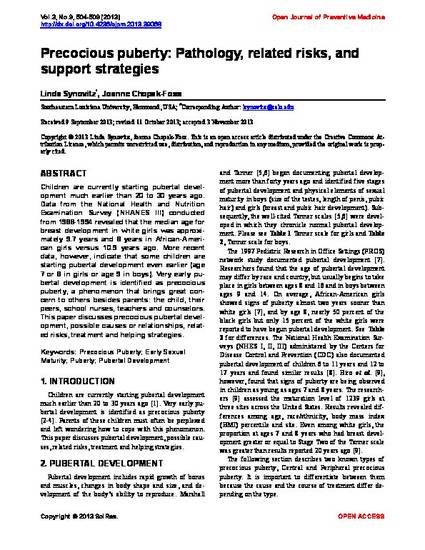
Children are currently starting pubertal development much earlier than 20 to 30 years ago. Data from the National Health and Nutrition Examination Survey (NHANES III) conducted from 1988-1994 revealed that the median age for breast development in white girls was approximately 9.7 years and 8 years in African-American girls versus 10.9 years ago. More recent data, however, indicate that some children are starting pubertal development even earlier (age 7 or 8 in girls or age 9 in boys). Very early pubertal development is identified as precocious puberty, a phenomenon that brings great concern to others besides parents: the child, their peers, school nurses, teachers and counselors. This paper discusses precocious pubertal development, possible causes or relationships, related risks, treatment and helping strategies.
Available at: http://works.bepress.com/joanne_chopak-foss/40/

Copyright © 2013 Linda Synovitz, Joanne Chopak-Foss. This is an open access article distributed under the Creative Commons Attribution License, which permits unrestricted use, distribution, and reproduction in any medium, provided the original work is properly cited. Article obtained from the Open Journal of Preventive Medicine.